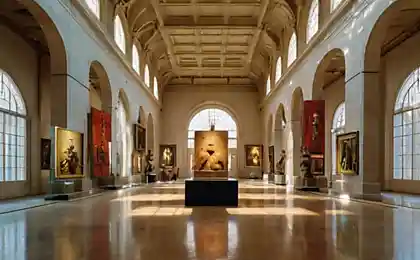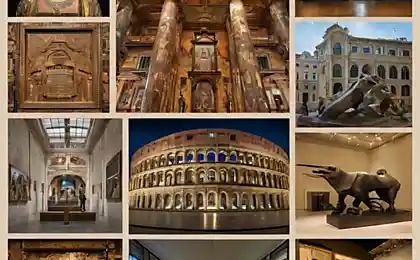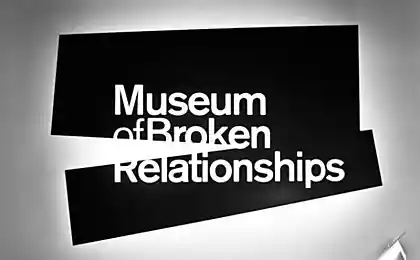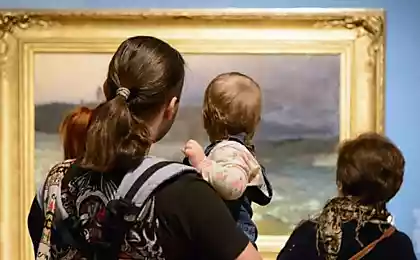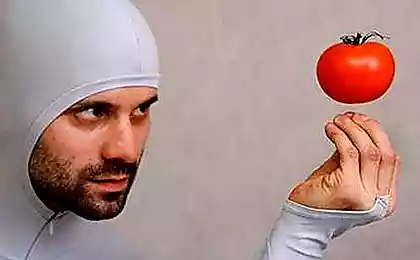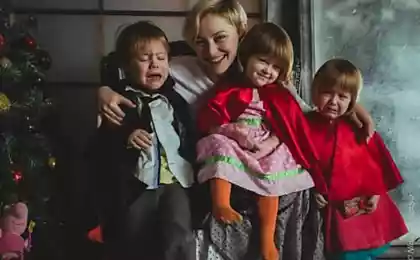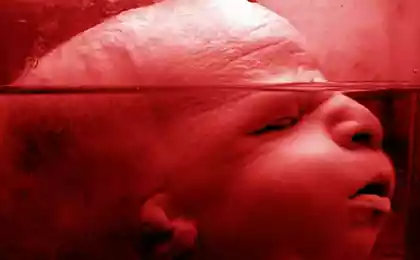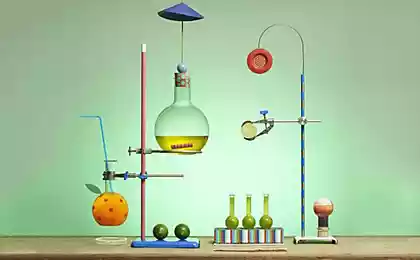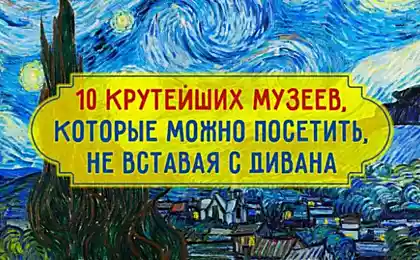1571
Unusual Museums
Museums everywhere - in almost every major city in the world has at least one museum, and most of them are devoted to the arts or history. Although such museums as the Louvre and New York's Museum of Modern Art, is an important cultural heritage, sometimes people want to move away from the beaten track and see something strange.
10. The Paris Museum of sewage (Le Musée des Égouts de Paris)
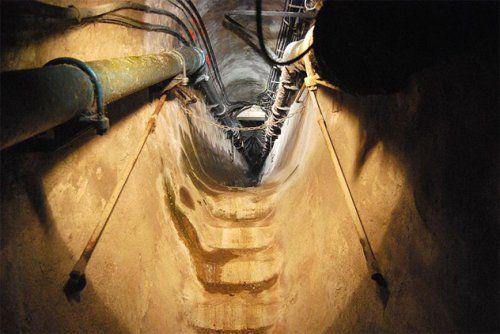
Located in the capital of the French Museum of sewerage is something of a museum tour, during which you can not stop for a long time and will most likely not want to do it. The first vaulted sewer tunnel was built in 1370 and all its filth thrown in the river flowing nearby. Since sewage system gradually grew and now the entire length of the system is more than 2,400 kilometers.
Since the World Expo 1867, the government allowed ordinary people to travel the depths of the Paris underground system with the help of a small locomotive, as well as boats and gondolas, carrying people on the sewerage system. Unfortunately, public tours, other than provided by the Paris Museum of sanitation, currently banned for safety reasons. Each intersection equipped with a system of traffic signs that coincide with the signs on the streets at the surface, so that you can travel to Paris and not seeing the French. Although, in fairness it should be noted that in this case you will not see and French buildings.
9. Museum of questionable medical devices (Museum Of Questionable Medical Devices)
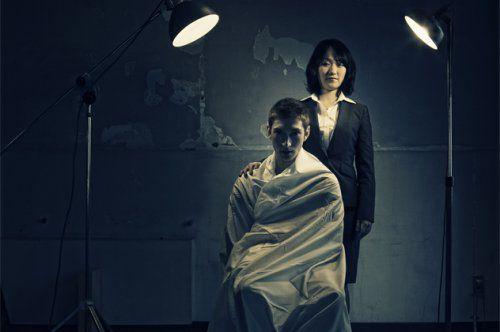
Although the Museum of questionable medical devices officially closed, since 2002, he found a permanent home in an exhibition at the Science Museum of Minnesota (Science Museum of Minnesota). The museum, founded by Bob McCoy (Bob McCoy), a self-proclaimed expert medical quackery, collects instruments from the early 20th century, invented to cure various diseases. Popular devices include a foot pump for breast enlargement and the device, the patient's beating electricity to increase energy.
Several instruments are still in working order, for example, the meter used to Phrenology, who allegedly helped to explore the human brain, and help detect, inter alia, their level of intelligence and ethics. Others have already broken, for example, fluoroscopy Buster Brown (Buster Brown) to try on shoes. This device is mounted in a shoe store that allows children and adults to look inside their shoes and see how well they fit the shoes. Instruments appeared in 1930 and was eventually banned by the Office of FDA Food and Drug Administration in 1970.
8. Winchester House (Winchester Mystery House)

Photo: Spiel
Winchester House was built in 1800, Sarah Winchester (Sarah Winchester), wife and widow of William Wirt Winchester (William Wirt Winchester), heir to the Winchester rifle inventor. After the death of her husband, Sarah contacted psychic, who told her that the ghosts of people killed by the guns of her family were angry. The only way to subdue them was to start building a house that will never be completed, or Sarah will die.
So, for 38 years, spending nearly $ 6 million, Sarah built a house on a plot of 55 hectares near San Jose (San Jose), California. By the time of her death in 1922, the house had 160 rooms but only 13 bathrooms. According to rumors, Sarah never slept in one bedroom for two nights in a row, to deceive the ghosts. In addition, around the house apart staircases leading to nowhere.
7. Museum of broken relationships (Museum Of Broken Relationships)

Photo: Ho Patty (Patty Ho)
The brainchild of a pair of Croatians named Olinka Vishtitsa (Olinka Vištica) and Drazen Grubishich (Dražen Grubišic) - Museum of broken relationships was founded in 2006 as a touring exhibition, the exhibits of which were items left after the collapsed four-year relationship the pair. Collection slowly replenished items donated by family and friends, and served as an outlet for people grieving. In 2010, thanks to the popularity of their ideas and Vishtitsa Grubishich able to find permanent home in Zagreb (Zagreb).
At the moment, the museum is visited annually by 40,000 people, and it is the only museum in the city, privately financed. The museum displays about 100 exhibits that are classified according to the type and duration of the relationship. Some of them are happy, but most still cause sadness, such as a pair of garters accompanying text with the following: "I never let them put on. Maybe if I would have done it, the relationship would be a long time. " In 2011, the museum was named "most innovative" at a premium "European museum of the year».
6. The Museum of Bad Art (Museum Of Bad Art)

In fact, three of the museums in Massachusetts Museum of Bad Art was founded in 1994 in order to show the world the art of very poor quality. Their slogan is "Art is so bad that it can not be ignored." Antique dealer Scott Wilson (Scott Wilson) had the idea of the museum after he saw between two garbage cans terrible picture of an elderly woman dancing on the field and started to collect examples of bad art with his friend Jerry Reilly (Jerry Reilly).
At the moment, the collection boasts 600 exhibits, although only 50 to 70 are exposed at the same time for public review. Most of the exhibits are donations or are on landfills and art objects subjected to close study of the process before they will include in the collection. This is to exclude artists, non-serious about his work. Only 10 percent of the found works included in the collection. Critics argue that mocks the art museum, but the owners insist that the failures are an important step in the creative process. Interesting fact: after one of the paintings had been stolen, the owners of the museum installed a fake security camera with a sign: "Attention. The gallery held a fake surveillance ».
5. Hall of Fame and Museum Tarakanov (Cockroach Hall Of Fame Museum)
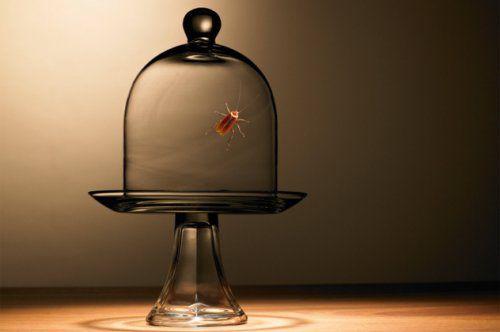
Although he has since moved to Phoenix (Phoenix), Arizona Hall of Fame Tarakanov it was originally opened in Plano (Plano), Texas, and was coined by an exterminator Bohdanom Michael (Michael Bohdan). The museum, which began in his studio, quickly became popular thanks to the creative approach - dead cockroaches dressed up as the stars and historical figures. Visitors can enjoy such classic works as Perouch Ross (Ross Peroach) (pun Ross Perot and cockroach) and David Letterouch (David Letteroach) (David Letterman).
Bohdan began experimenting with cockroaches in the 1980s, when he held a contest for the largest cockroach in Dallas. He then traveled around the country, organizing fashion shows for advertising cockroaches company engaged in the extermination of insects. Bohdan cockroaches saved from destruction, collecting them for many years. Over time, he reached the status of a minor-known personality, and even invited to the TV show «The Tonight Show». Featured his collection is perhaps the bald cockroach sitting next to the piano, called Liberoachi (Liberoachi) (Liberace).
4. Museum of cats (Cat Museum)
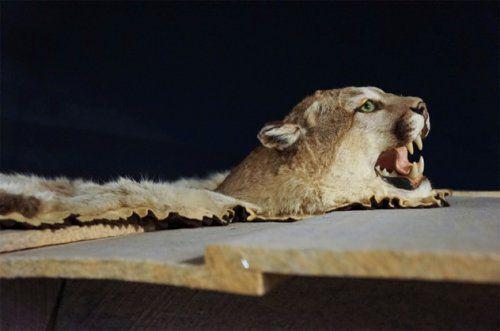
Cat Museum, located in Kuching (Kuching), Malaysia, as you may have guessed, is dedicated to our beloved feline friends. The museum was founded by the prime minister of the state who wanted to thus be noted Heritage City (Kuching translated from Malay means "cat"). Visitors can see some installations that describe the history of domesticated cats as well as art maps.
Although it is not the most dismal place in the world, the museum Cats still can find some interesting artifacts, more than 2000, to be exact, including a mummified cat Age 5 000 years of Beni Hassan (Beni Hassan), Egypt. Perhaps the most valuable item is a stuffed one of the world's rarest cats: bay cat. It can be found only in the rainforest of Borneo Kuching and Museum argues that it is the only effigy of the cat in the world. The museum is very popular among the local population, as cats are incredibly popular here, and the island nation still believe in many superstitions associated with cats. It is believed that some residents of Malaysia cat dipped in a pot of water until it almost zahlebnёtsya to cause rain.
3. Museum of burnt food (Museum Of Burnt Food)
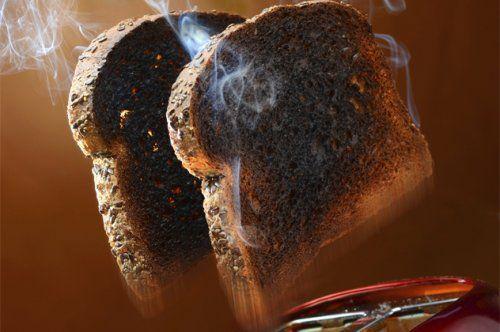
Another attraction of the Massachusetts Museum of burnt food has its roots in the late 1980s, when the harpist, nominated for the "Grammy" Deborah Henson-Conant (Deborah Henson-Conant) start to heat hot apple cider. Her distracted long telephone conversation and cider completely burned to the moment when she woke up. Although, strictly speaking, is not a museum - the exhibits are stored in the house Henson-Conant - they sometimes lend various exhibitions as well as they can always look at the museum site.
One of the most valuable exhibits is a dish of sweet potatoes left in the oven slowly being prepared for more than five weeks until the Henson-Conant was in Mexico. Although the approval process is not very thorough, she always reminds people that only accepts occasional setbacks kitchen (their "creations" can be downloaded from the website). The motto of the museum: "Always cook over low heat, and lay down to take a nap ...».
2. Museum of the holy souls in purgatory (Museum Of The Holy Souls In Purgatory)
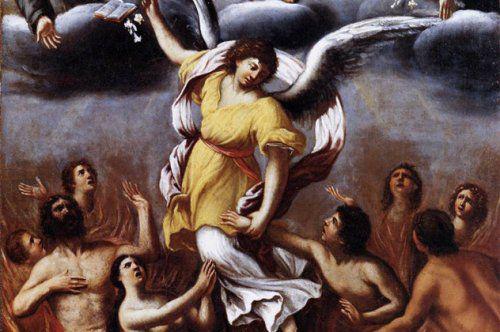
Incredibly small room, located in the Church of the Sacred Heart and prayers for the dead (Church of the Sacred Heart of the Suffrage) in Rome - it is a museum, which is home to exhibits that were allegedly in contact with people's souls from purgatory. For those who are not familiar with the term, in the Catholic Church is a place of purgatory, where the souls of the dead atone for their sins. If people in the world are praying for the souls in purgatory length of stay reduced. Victor Jouet (Victor Jouet), founder of the museum, was inspired by a fire, which resulted in part of the church was burned, and on one wall was scorched symbol resembling a human face, which is considered Jouet, was at that time in purgatory.
In the museum there are various objects such as a book, with the imprint of the hand, which allegedly belonged to the late priest. The other thing, according Jouet, received his "super power" after a woman has had two of the liturgy in honor of his mother in law, seeing her in his dreams.
1. Museum of the aqueduct of Beijing (Beijing Museum Of Tap Water)

Built on the site where once stood the first water treatment plant in Beijing, the museum contains more than 130 different objects related to the history of water supply system in China. It is a tribute to the early co-operation between China and the Western world, and the museum houses many important from the standpoint of the history of objects, such as posters, notifying about the invention of the aqueduct. At that time, many Chinese people do not trust this "foreign water" and it was easy to convince of the benefits of running water.
Due to the outbreak of the revolution water company it lasted only three years. The remains of the first aqueduct can still be found, even during the Great Leap Forward, Mao Zedong (Mao Zedong's Great Leap Forward) most of the steel and metal structures once stood on the site of the museum, was destroyed.
10. The Paris Museum of sewage (Le Musée des Égouts de Paris)

Located in the capital of the French Museum of sewerage is something of a museum tour, during which you can not stop for a long time and will most likely not want to do it. The first vaulted sewer tunnel was built in 1370 and all its filth thrown in the river flowing nearby. Since sewage system gradually grew and now the entire length of the system is more than 2,400 kilometers.
Since the World Expo 1867, the government allowed ordinary people to travel the depths of the Paris underground system with the help of a small locomotive, as well as boats and gondolas, carrying people on the sewerage system. Unfortunately, public tours, other than provided by the Paris Museum of sanitation, currently banned for safety reasons. Each intersection equipped with a system of traffic signs that coincide with the signs on the streets at the surface, so that you can travel to Paris and not seeing the French. Although, in fairness it should be noted that in this case you will not see and French buildings.
9. Museum of questionable medical devices (Museum Of Questionable Medical Devices)

Although the Museum of questionable medical devices officially closed, since 2002, he found a permanent home in an exhibition at the Science Museum of Minnesota (Science Museum of Minnesota). The museum, founded by Bob McCoy (Bob McCoy), a self-proclaimed expert medical quackery, collects instruments from the early 20th century, invented to cure various diseases. Popular devices include a foot pump for breast enlargement and the device, the patient's beating electricity to increase energy.
Several instruments are still in working order, for example, the meter used to Phrenology, who allegedly helped to explore the human brain, and help detect, inter alia, their level of intelligence and ethics. Others have already broken, for example, fluoroscopy Buster Brown (Buster Brown) to try on shoes. This device is mounted in a shoe store that allows children and adults to look inside their shoes and see how well they fit the shoes. Instruments appeared in 1930 and was eventually banned by the Office of FDA Food and Drug Administration in 1970.
8. Winchester House (Winchester Mystery House)

Photo: Spiel
Winchester House was built in 1800, Sarah Winchester (Sarah Winchester), wife and widow of William Wirt Winchester (William Wirt Winchester), heir to the Winchester rifle inventor. After the death of her husband, Sarah contacted psychic, who told her that the ghosts of people killed by the guns of her family were angry. The only way to subdue them was to start building a house that will never be completed, or Sarah will die.
So, for 38 years, spending nearly $ 6 million, Sarah built a house on a plot of 55 hectares near San Jose (San Jose), California. By the time of her death in 1922, the house had 160 rooms but only 13 bathrooms. According to rumors, Sarah never slept in one bedroom for two nights in a row, to deceive the ghosts. In addition, around the house apart staircases leading to nowhere.
7. Museum of broken relationships (Museum Of Broken Relationships)

Photo: Ho Patty (Patty Ho)
The brainchild of a pair of Croatians named Olinka Vishtitsa (Olinka Vištica) and Drazen Grubishich (Dražen Grubišic) - Museum of broken relationships was founded in 2006 as a touring exhibition, the exhibits of which were items left after the collapsed four-year relationship the pair. Collection slowly replenished items donated by family and friends, and served as an outlet for people grieving. In 2010, thanks to the popularity of their ideas and Vishtitsa Grubishich able to find permanent home in Zagreb (Zagreb).
At the moment, the museum is visited annually by 40,000 people, and it is the only museum in the city, privately financed. The museum displays about 100 exhibits that are classified according to the type and duration of the relationship. Some of them are happy, but most still cause sadness, such as a pair of garters accompanying text with the following: "I never let them put on. Maybe if I would have done it, the relationship would be a long time. " In 2011, the museum was named "most innovative" at a premium "European museum of the year».
6. The Museum of Bad Art (Museum Of Bad Art)

In fact, three of the museums in Massachusetts Museum of Bad Art was founded in 1994 in order to show the world the art of very poor quality. Their slogan is "Art is so bad that it can not be ignored." Antique dealer Scott Wilson (Scott Wilson) had the idea of the museum after he saw between two garbage cans terrible picture of an elderly woman dancing on the field and started to collect examples of bad art with his friend Jerry Reilly (Jerry Reilly).
At the moment, the collection boasts 600 exhibits, although only 50 to 70 are exposed at the same time for public review. Most of the exhibits are donations or are on landfills and art objects subjected to close study of the process before they will include in the collection. This is to exclude artists, non-serious about his work. Only 10 percent of the found works included in the collection. Critics argue that mocks the art museum, but the owners insist that the failures are an important step in the creative process. Interesting fact: after one of the paintings had been stolen, the owners of the museum installed a fake security camera with a sign: "Attention. The gallery held a fake surveillance ».
5. Hall of Fame and Museum Tarakanov (Cockroach Hall Of Fame Museum)

Although he has since moved to Phoenix (Phoenix), Arizona Hall of Fame Tarakanov it was originally opened in Plano (Plano), Texas, and was coined by an exterminator Bohdanom Michael (Michael Bohdan). The museum, which began in his studio, quickly became popular thanks to the creative approach - dead cockroaches dressed up as the stars and historical figures. Visitors can enjoy such classic works as Perouch Ross (Ross Peroach) (pun Ross Perot and cockroach) and David Letterouch (David Letteroach) (David Letterman).
Bohdan began experimenting with cockroaches in the 1980s, when he held a contest for the largest cockroach in Dallas. He then traveled around the country, organizing fashion shows for advertising cockroaches company engaged in the extermination of insects. Bohdan cockroaches saved from destruction, collecting them for many years. Over time, he reached the status of a minor-known personality, and even invited to the TV show «The Tonight Show». Featured his collection is perhaps the bald cockroach sitting next to the piano, called Liberoachi (Liberoachi) (Liberace).
4. Museum of cats (Cat Museum)

Cat Museum, located in Kuching (Kuching), Malaysia, as you may have guessed, is dedicated to our beloved feline friends. The museum was founded by the prime minister of the state who wanted to thus be noted Heritage City (Kuching translated from Malay means "cat"). Visitors can see some installations that describe the history of domesticated cats as well as art maps.
Although it is not the most dismal place in the world, the museum Cats still can find some interesting artifacts, more than 2000, to be exact, including a mummified cat Age 5 000 years of Beni Hassan (Beni Hassan), Egypt. Perhaps the most valuable item is a stuffed one of the world's rarest cats: bay cat. It can be found only in the rainforest of Borneo Kuching and Museum argues that it is the only effigy of the cat in the world. The museum is very popular among the local population, as cats are incredibly popular here, and the island nation still believe in many superstitions associated with cats. It is believed that some residents of Malaysia cat dipped in a pot of water until it almost zahlebnёtsya to cause rain.
3. Museum of burnt food (Museum Of Burnt Food)

Another attraction of the Massachusetts Museum of burnt food has its roots in the late 1980s, when the harpist, nominated for the "Grammy" Deborah Henson-Conant (Deborah Henson-Conant) start to heat hot apple cider. Her distracted long telephone conversation and cider completely burned to the moment when she woke up. Although, strictly speaking, is not a museum - the exhibits are stored in the house Henson-Conant - they sometimes lend various exhibitions as well as they can always look at the museum site.
One of the most valuable exhibits is a dish of sweet potatoes left in the oven slowly being prepared for more than five weeks until the Henson-Conant was in Mexico. Although the approval process is not very thorough, she always reminds people that only accepts occasional setbacks kitchen (their "creations" can be downloaded from the website). The motto of the museum: "Always cook over low heat, and lay down to take a nap ...».
2. Museum of the holy souls in purgatory (Museum Of The Holy Souls In Purgatory)

Incredibly small room, located in the Church of the Sacred Heart and prayers for the dead (Church of the Sacred Heart of the Suffrage) in Rome - it is a museum, which is home to exhibits that were allegedly in contact with people's souls from purgatory. For those who are not familiar with the term, in the Catholic Church is a place of purgatory, where the souls of the dead atone for their sins. If people in the world are praying for the souls in purgatory length of stay reduced. Victor Jouet (Victor Jouet), founder of the museum, was inspired by a fire, which resulted in part of the church was burned, and on one wall was scorched symbol resembling a human face, which is considered Jouet, was at that time in purgatory.
In the museum there are various objects such as a book, with the imprint of the hand, which allegedly belonged to the late priest. The other thing, according Jouet, received his "super power" after a woman has had two of the liturgy in honor of his mother in law, seeing her in his dreams.
1. Museum of the aqueduct of Beijing (Beijing Museum Of Tap Water)

Built on the site where once stood the first water treatment plant in Beijing, the museum contains more than 130 different objects related to the history of water supply system in China. It is a tribute to the early co-operation between China and the Western world, and the museum houses many important from the standpoint of the history of objects, such as posters, notifying about the invention of the aqueduct. At that time, many Chinese people do not trust this "foreign water" and it was easy to convince of the benefits of running water.
Due to the outbreak of the revolution water company it lasted only three years. The remains of the first aqueduct can still be found, even during the Great Leap Forward, Mao Zedong (Mao Zedong's Great Leap Forward) most of the steel and metal structures once stood on the site of the museum, was destroyed.

